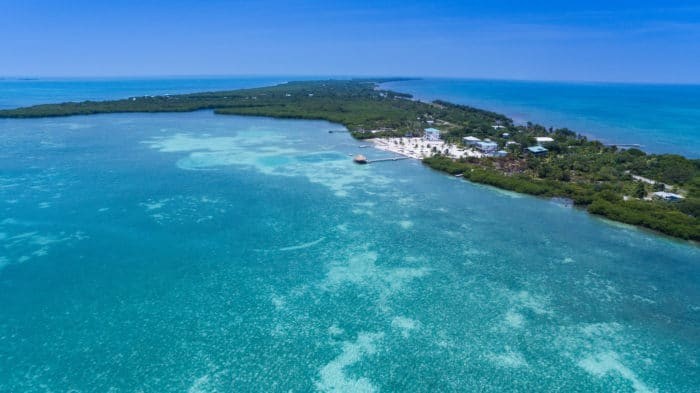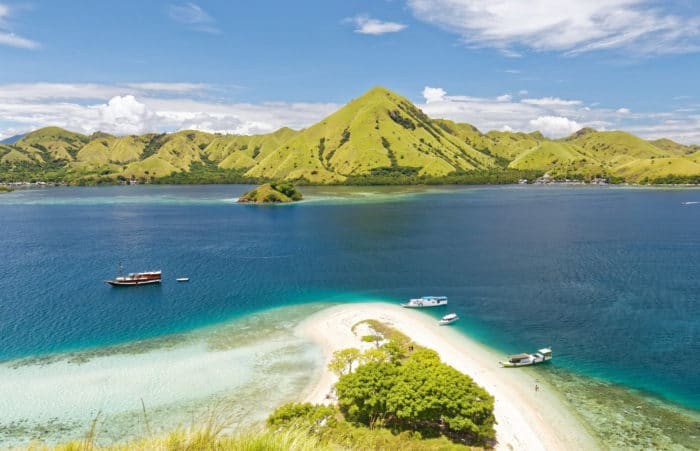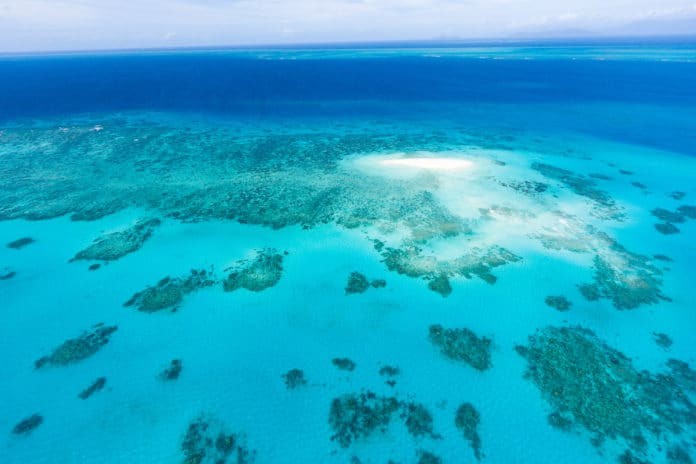I like to think that the stereotype that divers are environmentally protective is generally true. I do accept that the level of environmental responsibility varies between nations, and some divers may not see the need for environmental responsibility. Back in the 1960s, there were few controls over pollution. Factories polluted our air and waters. Our garbage was burned putting toxic waste in the air or it was loaded on barges and dumped into the sea. Now, most of the world have controls in place. While the environmental movement started at different times in different nations, The United States really started moving forward in 1970, the students protesting against the Vietnam War, also started to protest about the environment. By 1972, laws were starting to be put in place. Today, we are still fighting our battles but things are much improved.
At the end of World War Two, the United Nations was established and the United Nations Educational, Scientific and Cultural Organization (UNESCO) was authorized. The original purpose of the UNESCO was to rebuild schools, libraries, and museums that were destroyed in the war. As they accomplish that mission, they moved on to other things.
“The United Nations Educational, Scientific and Cultural Organization (UNESCO) seeks to encourage the identification, protection, and preservation of cultural and natural heritage around the world considered to be of outstanding value to humanity. This is embodied in an international treaty called the Convention concerning the Protection of the World Cultural and Natural Heritage, adopted by UNESCO in 1972.”
The UNESCO started to recognize heritage sites around the world. To be seen as a World Heritage site, the host country had to take steps to preserve what was unique and important to the site. Currently, there are 1092 sites around the world. There is 845 culture sites, 209 natural sites and 38 that are both.
Most of the 209 natural sites and the 38 mix sites are on land, however, some of them are underwater.

Dive UNESCO Sites
“…natural heritage around the world considered to be of outstanding value to humanity.”
If you ask a diver why they dive, you will get unique answers. Everyone has their own viewpoints and feelings. Often they are difficult to put in words. One part of it for me is that I am experiencing something that few have experienced before. Yes, there are a few million divers, but, there are 7.36 billion people. As a diver, we can often see the impact of pollution. If we dive the same area over time, we can see if the problem is getting worst or improving the conditions. The local authorities of the UNESCO sites actively monitor the progress or lack of it. The descriptions that follow include a portion of the citation for each site summarizing why they are important.
Frequently Dived Heritage Sites
Belize Barrier Reef System
“The Belize Barrier Reef Reserve System (BBRRS), inscribed as a UNESCO World Heritage Site in 1996, is comprised of seven protected areas; Bacalar Chico National Park and Marine Reserve, Blue Hole Natural Monument, Half Moon Caye Natural Monument, South Water Caye Marine Reserve, Glover’s Reef Marine Reserve, Laughing Bird Caye National Park and Sapodilla Cayes Marine Reserve.”
The UNESCO Heritage does not cover the entire Belize Barrier reef nor the entire Mesoamerican Reef which includes the Belize Reef. Most the best diving in Belize is, however, within the protected areas mentioned. The BBRRS has recently been removed from the endangered list.
Great Barrier Reef
“As the world’s most extensive coral reef ecosystem, the Great Barrier Reef is a globally outstanding and significant entity. Practically the entire ecosystem was inscribed as World Heritage in 1981”
The Great Barrier Reef of Australia has its share of concerns as well. However, the diving is still great and efforts are being made to maintain the health of the reef.

A Little More Remote
Komodo National Park
“The coral reefs fringing the coast of Komodo are diverse and luxuriant due to the clear water, intense sunlight and rapid exchange of nutrient-rich water from deeper areas of the archipelago.”
Komodo National Park has two focus, the land portion with the Komodo Dragoons and the rich coral reefs. There are no accommodations in the park. There are resorts on nearby islands which will bring you into the park for land tours and scuba diving. Diving from a liveaboard is an option that many divers choose.
Ningaloo Coast Australia
The Ningaloo Coast, on the remote western coast of Australia, is a heritage site that is both marine and land. Inscribed in 2011, the citation includes this:
“The property supports rare and large aggregations of whale sharks along with important aggregations of other fish species and marine mammals. The aggregations in Ningaloo following the mass coral spawning and seasonal nutrient upwelling cause a peak in productivity that leads approximately 300-500 whale sharks to gather, making this the largest documented aggregation in the world. In addition to the remarkable aggregations of whale sharks, the Ningaloo Reef harbors a high marine diversity of more than 300 documented coral species, over 700 reef fish species, roughly 650 mollusk species, as well as around 600 crustacean species and more than 1,000 species of marine algae. The high numbers of 155 sponge species and 25 new species of echinoderms add to the significance of the area.”
The reef is the longest fringing reef in the world. It is a very remote location with few airports.
Liveaboard Locations
Tubbataha Reefs Natural Park
Located a 14-hour boat ride from the island of Palawan, the Philippines. Located in the Sulu Sea, Tubbataha Reefs Natural Park can only be dived four months a year. Inscribed in 1993 and extended in 2009 the citation says in part:
“… lies in a unique position in the center of the Sulu Sea, and includes the Tubbataha and Jessie Beazley Reefs. It protects an area of almost 100,000 hectares of high-quality marine habitats containing three atolls and a large area of deep sea. The property is home to a great diversity of marine life. Whales, dolphins, sharks, turtles and Napoleon wrasse are amongst the key species found here. The reef ecosystems support over 350 species of coral and almost 500 species of fish. The reserve also protects one of the few remaining colonies of breeding seabirds in the region.”
Further in the citation, it is also reported that the heritage site has the largest concentration of white tip sharks in the world.
Galápagos Islands, Equator
The Galápagos Islands were inscribed in 1978 and expanded in 2001. the citation reads in part
“The Galapagos archipelago is located about 1,000 km from continental Ecuador and is composed of 127 islands, islet, and rocks, of which 19 are large and 4are inhabited. 97% of the total emerged surface (7,665,100 ha) was declared National Park in 1959. Human settlements are restricted to the remaining 3% in specifically zoned rural and urban areas on four islands (a fifth island only has an airport, tourism dock, fuel containment, and military facilities). The islands are surrounded by the Galapagos Marine Reserve which was created in 1986 (70,000 km2) and extended to its current area (133,000 km2) in 1998, making it one of the largest marine reserves in the world”
While it is possible to fly to the Galápagos Islands and dive from resorts, the majority of the scuba divers choose to take a liveaboard dive boat to the northern end of the archipelago to include Darwin and Wolf islands.
Cocos Island National Park
Cocos Island National Park is 550 km off the Pacific coast of Costa Rica and was inscribed in 1997 and expanded in 2002. Only a few park rangers live on the island and visiting the islands require a permit. One most liveaboard sailings, the boat is permitted one landing in a week. The citation tells us:
“However, the main species conservation value derives from critical marine habitat and the corresponding role of the property in the conservation of large pelagic species, especially several species of sharks. Among the latter are exceptional aggregations of the near-threatened Silky and Lemon Shark, the vulnerable Bigeye Thresher Shark and Galapagos Shark, the emblematic and endangered Hammerhead Shark, as well as White-tip Reef Shark and Black-tip Shark. Among some 300 recorded fish species are important aggregations of large pelagic fish, such as the vulnerable Whale Shark and Blue Marlin, as well as Sailfish Broadbill Swordfish, Shortbill Spearfish, Giant Manta Ray and Pelagic Stingray. Blue Whale and Bottlenose Dolphin are among the visiting marine mammals.”
Summary
The nomination to become a World Heritage Site is done by the local government after they have put laws and programs in place to protect the sites. The selection of these destinations as World Heritage Sites are done by a scientist. The justifications shown in the citations are scientific in nature and not just some sales copy for a marketing effort. We can only hope that the efforts already put forth will continue and that the next generation will still be able to enjoy these sites.

